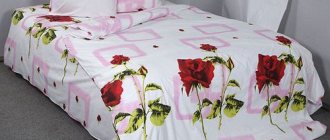Despite the crisis, small businesses continue to develop and remain profitable. The reason is simple: merchants react faster to a drop in demand and purchasing power, they are flexible in pricing and can afford various promotions, discounts and sales. While large companies and industries are inert by nature, it is difficult for them to reorient themselves and keep up with changes in the market.
The most common and profitable types of small businesses include retail and small retail sales through retail chains: kiosks and pavilions. Where to start?
Opening of a pavilion or kiosk
Before you start opening a retail outlet, you must register as a private or individual entrepreneur. Retail trade is indicated as the type of activity.
Next, you should find a suitable place for a kiosk or pavilion.
When this stage has been passed, you can proceed to the collection and execution of documents permitting trade. This is the most difficult stage. Each of the regulatory authorities puts forward its own requirements, without which permission cannot be obtained.
You can get around at least a number of difficulties by purchasing a ready-made business, in which all the necessary documents have been drawn up and all that remains is to import the equipment, if not, the goods, and engage in sales.
Often you can immediately find a ready-made network of retail outlets for sale. Which has already managed to acquire a clientele and is making a profit. An extensive network brings much more benefits than one kiosk or pavilion, especially if it sells the same goods.
Sequence of construction of a trade pavilion
There are several options for how new retail pavilions can be built. In one of the most common construction technologies, the sequence of actions includes:
Foundation
Making a foundation into which support posts made of square pipes are installed, located at right angles to the ground plane.
Installation of support elements
Attaching horizontal type spacers to supporting elements made of profile pipes, connected by welding.
An alternative way of making prefabricated trade pavilions involves making a frame based on rectangular and square pipes, which provide the best strength indicators, and are connected to each other using welding and bolts.
Installation of the structure frame
Making a truss for subsequent installation of walls, glazing and roof.
Floor installation
There are several options for arranging flooring in a building.
The first floor option consists of the following layers:
- sandwich panel (thickness 100-300mm),
- plywood with increased water resistance GOST 3916.2-89 (thickness 12-22mm),
- laminate or linoleum with PVC plinth;
The second floor option consists of the following layers:
- waterproofing,
- polystyrene foam insulation (50-200mm thick),
- screed made of cement-sand mortar (50-80mm thick),
- porcelain tiles.
Sheathing of the structure
After receiving the frame of a building for retail trade, it is sheathed using a metal profile or sandwich panels, finished and insulated on top and on all sides using fiber based on mineral wool.
When finishing the roof, a galvanized seam pattern or a galvanized H60 corrugated sheet can be used, laid on top of the rafters from the metal parts of the frame. When arranging the interior of the structure, a suspended ceiling of the “Armstrong” variety can be used or cladding using sandwich panels having a thickness of 5–50 cm, with insulation in the form of mineral wool or PSBS.
Window installation
Next, the installation of windows is carried out, for which, to ensure heat retention in the room, builders recommend using three-layer double-glazed windows.
When designing glazing in a trade pavilion for selling flowers, the need of plants for natural sunlight should be taken into account.
In this regard, trade pavilions of this type, as a rule, have a larger number or larger windows.
Entry group
In the place provided for the entrance to the trade pavilion, on the ground or at a certain height, roller shutters or swing-type entrance doors are installed.
If you do not plan to operate the facility around the clock when installing doors, it is recommended to consider good protection against intruders.
Retail store equipment
At the stage of installation of retail equipment, shelves are arranged for displaying goods, displays are designed, and a window is installed for accepting cash and issuing goods.
Communications
At the next stage, the necessary communications are connected to the trade pavilion:
- electricity,
- sewerage,
- heating,
- signaling,
- Internet, Wi Fi.
Advertising design
At the last stage, when the building is ready, signage and advertising design for the exterior of the pavilion are installed, while the outside of the shopping pavilions may have thematic illustrations related to the goods sold in them.
The simplest and cheapest way to decorate the outside of a new pavilion is to paint it.
However, in order to attract the attention of buyers and increase product recognition among potential clients, it is better not to save money at this stage by thinking through an original, memorable and eye-catching design of a trade pavilion.
In addition to the above method of erecting a building for the sale of various products, it is possible to install a pavilion assembled in production on a prepared site made of concrete, asphalt or paving slabs. Trade pavilions can be made from aluminum profile SIP, or LSTK and finished on the outside with plastic or wood.
What is the difference between a pavilion and a kiosk?
When choosing between a kiosk and a pavilion, you must first of all understand how they differ from each other:
- Method of access and purchase of goods. A kiosk is a small closed room; communication between seller and buyer occurs through a window. The product itself is located inside and can only be seen through the display glass. The pavilion allows the buyer to go inside and independently choose any necessary product.
- Square. Kiosks most often have a small number of square meters from 5 to 20, since there is one seller inside, who does not need space. Customers move around inside the trade pavilion, so 10 square meters is not enough in this case.
Before choosing between these two building forms, you need to decide which product to sell, weigh all the pros and cons of kiosks and pavilions, and only then make a decision.
What do we offer
The design of the stalls is based on an insulated block container. Mineral or basalt wool is used as an insulating layer. This allows the building to be used all year round. The cladding and degree of glazing depend on the chosen model of the trade pavilion. In addition to standard projects, which can be viewed in the catalog, we offer the development of custom-made structures. In this case, the appearance of the building will best suit the client’s needs. We offer to buy a modular pavilion:
- required area and configuration,
- from quality materials,
- at an attractive price,
- with the possibility of delivery to the site and installation,
- for the sale of press, flowers, food, etc.
To order the production of trade pavilions in Moscow or another city, leave a request on the website. It is convenient to receive detailed advice by phone or email.
Open kiosk. Advantages and disadvantages
At a kiosk, it is most advisable to sell food, drinks, including alcohol, related products (chips, nuts, etc.), animal feed, magazines and newspapers, and other things that are selected by name and not by technical characteristics.
In this case, the buyer does not need to pick up the product before purchasing; he knows exactly what he needs and can navigate the display.
Along with regular kiosks, there are mall kiosks. They are located inside shopping centers and are a small island with display windows containing goods. The disadvantages of such a kiosk are:
- the operating schedule of the shopping center itself, the kiosk cannot be opened before the complex itself opens;
- weak protection against theft; in a large crowd of people it is always easier for a professional thief to escape prosecution;
- the need to lay out goods every morning and put them away at night.
The advantage of such a mall kiosk is a crowd of people and the opportunity to place small advertising banners in the shopping center itself or distribute flyers, thanks to which sales can increase significantly. Most often, through such trading islands they sell: equipment, cosmetics, jewelry, sweets and other food products.
Showcases of mall kiosks are equipped with bright lighting, which helps to highlight the product favorably.
The costs of maintaining a kiosk are minimal:
- The price for using electricity is low. There is no need for additional lighting in the kiosk.
- To trade at a kiosk, one or two sellers are enough, who will work in shifts.
- Security is most often not needed, since the goods are inside and the risk of theft is very low.
- At night, shop windows can be covered with roller shutters or shields, making them impossible to damage. The only exception is mall kiosks.
- Small staff. With a small number of employees and low turnover, you can do the accounting yourself.
Interior decoration
Trade pavilions and kiosks are equipped with doors of various types, into which mechanical or electromechanical locks are installed. If the customer so desires, the production of models of trade pavilions may additionally include roller shutters and trade equipment .
Thus, trade pavilions and kiosks are the same change houses, but with one significant difference - they are used in the construction of a market. Trade pavilions and kiosks can solve the problem of saving space.
By contacting Construction Engineering Systems LLC, which manufactures and sells trade pavilions made of sandwich panels in the Moscow region, you can forget about long lead times, large financial waste and uncertainty about the quality of the products produced.
Additionally: see photos of shopping pavilions
Open the pavilion. Advantages and disadvantages
It is profitable to sell flowers, equipment, clothes, and shoes in the pavilion. That is, goods that the consumer will want to hold in their hands and even try on, assessing the quality of the product, its durability and compliance with other individual requirements.
In addition, in such a room you can sell food products, equipping it with display cases or shelves from which the buyer himself will take what he needs by paying at the checkout.
The pavilion area allows you to organize a small fitting room, which has a positive effect on sales.
Such premises have one significant disadvantage - the percentage of theft of goods in pavilions, where the buyer himself takes the necessary product from the shelf, is much higher than in kiosks.
The costs of maintaining the pavilion are also significantly higher:
- Products in display cases and refrigeration units require additional lighting to give the product a more favorable appearance. This leads to an increase in electricity bills.
- The need for protection. Concluding an agreement with a security company will not solve the problem of theft of goods in the hall, so you will have to keep one or two security guards on staff.
- Buy or rent more equipment. All goods must be correctly and beautifully arranged in display cases, while in a regular kiosk most often no attention is paid to the aesthetic appearance of the internal refrigerators.
- Sales team. For a trade pavilion, one seller is usually not enough. That is, salary costs increase several times.
- Rent price. The larger the area of the premises, the higher the rental cost.
- Larger volume of goods. This leads to an increase in procurement costs.
- Accounting. An increase in turnover will invariably lead to the need for high-quality professional accounting with the help of special companies or hiring an accountant.
Pavilion construction technologies
A trade pavilion for one or more workplaces is a covered structure equipped with an entrance door for visitors and staff. This feature, combined with communications in the form of electricity, arrangement of a bathroom and a change room, makes it possible to use the premises in inclement and rainy weather outside. The building is closed at night, which ensures the safety of the products being sold. In addition, the pavilion can be used for round-the-clock work when organizing work in several shifts.
A commercial facility can be installed in leased areas, such as shopping centers or markets, which further guarantees the safety of the products stored in it. When choosing a material at the design stage for the manufacture of pavilions, designers proceed from the possible minimization of capital investments while meeting customer requirements.
Which product to choose
Regardless of what type of outlet you choose, the main factor in a profitable business is the product. It is the correct choice that determines whether the retail outlet will pay off and bring dividends.
The food trade is considered the most profitable. In this sector, costs are recouped much faster than in any other. The daily turnover of a small retail outlet, which is located in a good location, is 500-1000 USD.
If you want to open your own business in trade, but do not have significant funds or experience, then your own stall can be a very good solution. Relatively simple management will allow you to start a business without leaving your permanent job, and diverse experience will help you develop skills for the future.
Retail has always been highly competitive. But if large stores have a great advantage in terms of volume and, accordingly, assortment, then small retail outlets have a close location, knowledge of their customers, and therefore an individual approach.
The main and weighty argument for opening a small retail outlet in front of a large store is the tangible savings in rent. And this is understandable. The disadvantages include the small area of the retail space, which does not allow storing a large amount of goods and the small size of the display case. Additionally, the inability to enter a retail space means a drop in sales during inclement weather.
Selling a narrow range of goods in a stall would be a good business that can be opened in small cities or towns. Often in such cases, the sparse population does not allow a specialized store to fully operate, and then it becomes clear that this empty niche can be occupied by a stall. It is important to remember here that the income of residents of the regions is significantly lower than that of residents of large cities, so pricing policies need to be thought out based on these realities.
The stall may have regular soybean customers, who mainly bring in most of the income. But if you sell food or stationery, it is unlikely that anyone will prefer to buy this product from you. But if you have chosen a narrow specialization, for example, different types of tea, then you will certainly be guaranteed an influx of regular customers.
The stall has some competitive advantages: Convenient location for customers Convenient working hours Unique assortment
Advertising, as a rule, is not needed, because the stall is clearly visible and the buyer will come himself, but if the retail outlet is not located near busy places, then the use of outdoor advertising will be justified.
Depending on the assortment and location, a stall can generate a monthly profit of up to several thousand dollars.
The initial investment will not be very burdensome.
This includes:
payment of rent (as a rule, the landlord works on a prepaid basis); payment to employees; purchase of the first batch of goods; purchasing a cash register; Possibly a heater and a refrigerator. Basics of small retail trading
Stage 3. What and how much to trade
First you need to study the bulletins of wholesale trade databases. Then you need to familiarize yourself with the assortment and markups of neighboring pavilions and make a short tour of wholesale organizations. Many trade pavilions sell low-alcohol drinks and tobacco products. This product is the most popular and has a high turnover.
Retail outlet, depending on location, markup, etc. capable of generating income from 1,500 conventional units to 500 conventional units.
Be engaged in the sale of soft drinks, tobacco products, donuts, whites, etc. It is best to practice in a pavilion located on the street. Audio and video products are best sold directly at stations. This is due to the fact that such a pavilion requires less documentation than other retail outlets.
Most novice businessmen study demand using the “poke” method. To do this, you just need to walk through neighboring or other shopping pavilions, buy several items of goods, study the assortment, etc. The markup, as a rule, is 30-35 percent, which is 1-5 in rubles. The product is usually represented by an average of 475 positions. The best time for sales is from 6 to 10 am, and from 17 to 23 pm. The product also sells well on holidays and weekends. At night there is practically no profit.
The most popular products are delivered to the pavilion every day before lunch. For timely delivery, you must contact the wholesale supplier in advance and order the required products. Ordering a large quantity of goods at once is advisable only if you have your own warehouse space.
Trading rules - simple but profitable
There are many directions for a trading business, which is why anyone can find a suitable way to start their own business. Moreover, to start, you don’t need huge investments; you can start with something small and gradually develop.
Trading is suitable for completely different people, including students , the main thing is to set priorities correctly. It is the idea, this “engine of progress” that makes it possible to create a whole multi-industry business from a small enterprise. Trade is a convenient business for a small town . In the village, you can grow vegetables and fruits, raise animals; your own rabbit or quail farm and a good sales market also provide excellent profits.
Pavilion construction procedure
In order to build a pavilion with your own hands as quickly as possible, it is recommended to use sandwich panels. Their installation is quite simple, so the work can be done without the help of specialists. Quite often, such buildings do not even require a foundation.
Interesting Facts! When constructing a pavilion, it is recommended to pay attention to the filler of the panels used. It is best to choose the category of fire-protected materials; this will be indicated by a special designation on the packaging. The fact is that kiosks often become victims of hooligans, so their fire safety must be at the proper level.
How to make a pavilion with your own hands? The lightness of the material, the weight of which can vary from 30 to 80 kg, and ease of installation allows you to do all the work yourself. For small buildings, a foundation is not required; a flat concrete surface will suffice. The help of construction equipment is also not needed. The procedure for constructing the pavilion is as follows:
- To build a shopping pavilion with your own hands, you will need to use drawings. The kiosk project can be ordered from a construction company, found on the Internet, or calculated with your own hands if you have the necessary skills. Often calculations are made based on the characteristics of the panels used, but since this material is difficult to adjust, it is better to give preference to standard slabs. The following drawings can also be used.
- The foundation is being built. If the construction will be carried out on a flat concrete surface, it can be abandoned. Since a kiosk made of sandwich panels is light in weight, a lightweight, shallow strip base or a strip-column base will suffice. The construction of the base consists of digging a pit, installing formwork based on boards and filling it with concrete mortar. For a strip-column foundation, you will also need to install piles.
- A metal frame is being erected. First of all, the wall and roof are assembled separately. The profile width is selected based on the calculation of the pressure on the building. You will also need to take into account that the frame structure has a large windage, because of this the load increases. After which the walls and roof are connected.
- The wall installation process starts from the corners. When connecting the panels, thermal insulation materials are laid between them, and the seams formed are filled with foam. The fastening of the plates is carried out using self-tapping screws. For safety and maintaining the integrity of window openings, you can use roller shutters.
- The roof sheathing is done in a similar way, but roofing sandwich panels are used to work with it. For sun protection functions in such structures the following are used: awnings, rain blinds, sun protection slats.
After all construction procedures are completed, the pavilion can be filled with goods, all the necessary equipment can be imported and gradually proceed to its opening.
A few more options that work for everyone
The optimal solution for the province is to do business on the Internet - reselling goods from China through an online store is much more profitable than keeping your own warehouse. Gadgets, cosmetics and branded clothing are especially popular.
If you want to develop your business in a resort town, choose exotic areas of business - selling souvenirs, use the principle of print-making. There are thousands of destinations available, and we will help guide you to them.
Conventionally, we can say that if you open a seasonal business selling corn, you will receive income from it only at a certain time. When choosing a niche or niches, consider this in advance.
( 24 ratings, average: 3.33 out of 5) Loading.
Cars
Tire service
If you open such a company on the highway, you will be able to overcome the seasonality of the business, because here the demand for such services increases sharply. The workshop area is from 20 square meters, and the cost of equipment is from 400 thousand rubles.
Especially for working on the highway, you can additionally purchase equipment for rolling damaged rims, this is about another 70-90 thousand rubles, but the costs are worth it.
Registering a business is quite simple, and as for income, you can count on an amount of 50 thousand rubles. monthly .
Car service
To provide a wider range of services, you can open a car service . The best place is at the entrance to the city.
For a car service center with an area of 100 square meters and a small range of services (tire fitting, running work, diagnostics), you will need about a million rubles. With the help of such a business, you can earn from 160 thousand rubles per month.
Food sector
When the question arises about what kind of business can be done on the highway, the first thing that appears is a driver who is tired from a long journey and wants to eat. Therefore, an inexpensive canteen is always a relevant type of business in “road” conditions.
As practice shows , cafes and restaurants are not that interesting to most car enthusiasts - it takes a lot of time and is expensive. But simpler options have every chance of success.
Stall with fresh pastries or fast food
This is an extremely profitable option, since the driver can take your products - pies, sandwiches, hot dogs, pancakes and buns with him on the road, which means that such a stall will be of interest to many passing people.
Kebab house
And for those who don’t mind taking a little break from the road, you can open a small kebab shop with affordable prices and a cozy atmosphere.
For a kebab shop with 7-8 tables you will need an area of about 70 square meters and costs of approximately 600 thousand rubles.
Typically, the profitability of such a business is 80-150%, but due to its location near the highway, it can increase significantly, and the business can pay for itself in a year and a half.











